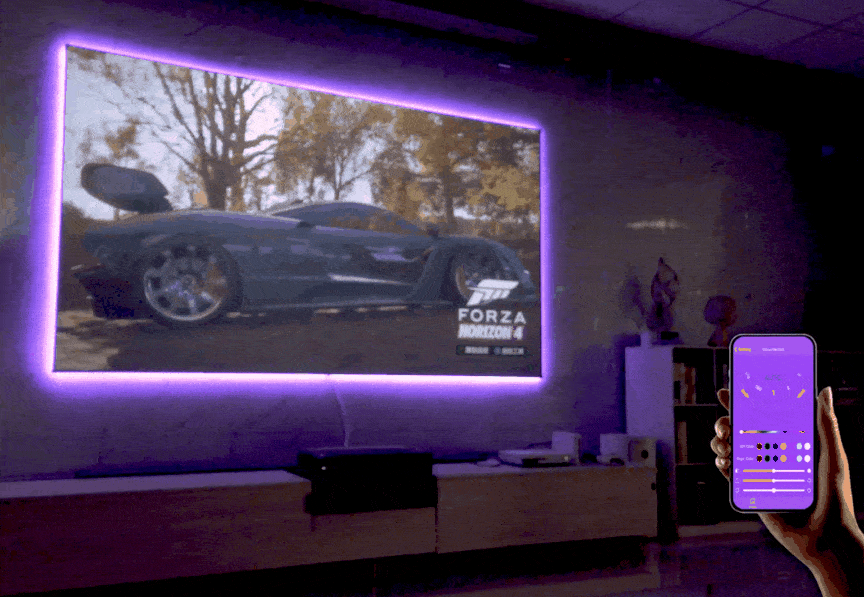© Copyright 2005-2025 SCREEN PRO® All Rights Reserved | Specifications are subject to change without notice. All Rights ReservedSite Map Designed by iwonder.cn
Building an Ambilight system for a projector screen can enhance the viewing experience by extending the colors and light effects from the screen onto the surrounding wall. Here's a general guide to building an Ambilight system for a projector screen:
Equipment and Materials:
LED light strips: Choose LED light strips that are capable of producing vibrant colors and have individually addressable LEDs for more precise control.
LED controller: Select an LED controller that supports the chosen LED light strips and offers color customization and control options.
Power supply: Ensure you have a suitable power supply to provide power to the LED light strips and the controller.
HDMI capture device: You'll need an HDMI capture device to capture the video signal from the source and extract color information for the Ambilight effect.
Computer or microcontroller: Use a computer or microcontroller to process the captured video signal and control the LED lights.
Mounting hardware and cables: Gather the necessary mounting hardware and cables to install and connect the LED light strips, controller, and HDMI capture device.
Installation:
Mount the LED light strips on the back of the projector screen frame or along the perimeter of the viewing area. Ensure the LEDs face the wall to achieve the desired Ambilight effect.
Connect the LED light strips to the LED controller, ensuring the wiring is secure and well-hidden.
Install the HDMI capture device between the video source (such as a media player or game console) and the projector.
Connect the HDMI output from the capture device to your computer or microcontroller for video processing.
Configuration and Control:
Set up the software or program on your computer or microcontroller to process the captured video signal and control the LED lights.
Configure the software to analyze the video content and extract color information.
Program the software to send color data to the LED controller, synchronizing the LED colors with the content on the screen.
Adjust the settings to fine-tune the Ambilight effect, such as brightness, color intensity, and responsiveness to changes in the video content.
Testing and Calibration:
Test the Ambilight system with different video content to ensure the LED lights respond accurately and create the desired effect.
Calibrate the system by adjusting color settings, light intensity, and position of the LED light strips to achieve the best results.
Make any necessary adjustments to the software or hardware settings based on your preferences and viewing environment.
It's worth noting that building an Ambilight system for a projector screen can involve some technical expertise, particularly in programming and video processing. If you're not familiar with these areas, you may want to seek guidance from online communities, and forums, or consult with experienced individuals to ensure a successful implementation.
